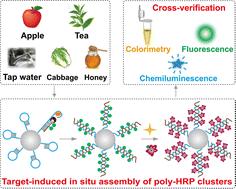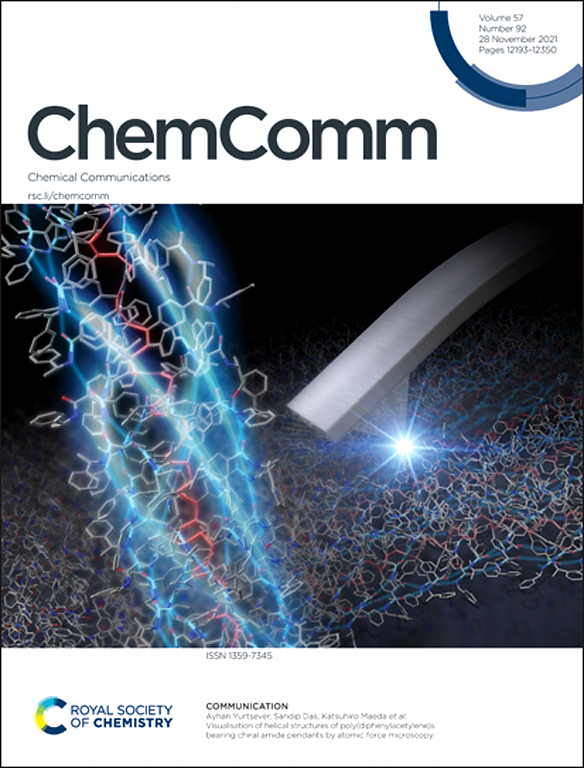靶向诱导多根过氧化物酶簇原位组装吡虫啉的光学传感
IF 4.2
2区 化学
Q2 CHEMISTRY, MULTIDISCIPLINARY
引用次数: 0
摘要
设计了一种基于靶标回收和多根过氧化物酶簇原位组装的新型光学放大策略。该方法对吡虫啉的检出限为1.26 pg mL−1,并成功地在实际食品样品中检测到吡虫啉,突出了其在微量农药的即时检测方面的巨大潜力。本文章由计算机程序翻译,如有差异,请以英文原文为准。

Optical sensing of imidacloprid via target-induced in situ assembly of poly-horseradish peroxidase clusters
A novel optical amplification strategy based on target recycling and in situ assembly of poly-horseradish peroxidase clusters was devised. The method achieves a detection limit of 1.26 pg mL−1 for imidacloprid and successfully allowed imidacloprid detection in real food samples, highlighting its enormous potential for point-of-care testing of trace pesticides.
求助全文
通过发布文献求助,成功后即可免费获取论文全文。
去求助
来源期刊

Chemical Communications
化学-化学综合
CiteScore
8.60
自引率
4.10%
发文量
2705
审稿时长
1.4 months
期刊介绍:
ChemComm (Chemical Communications) is renowned as the fastest publisher of articles providing information on new avenues of research, drawn from all the world''s major areas of chemical research.
 求助内容:
求助内容: 应助结果提醒方式:
应助结果提醒方式:


